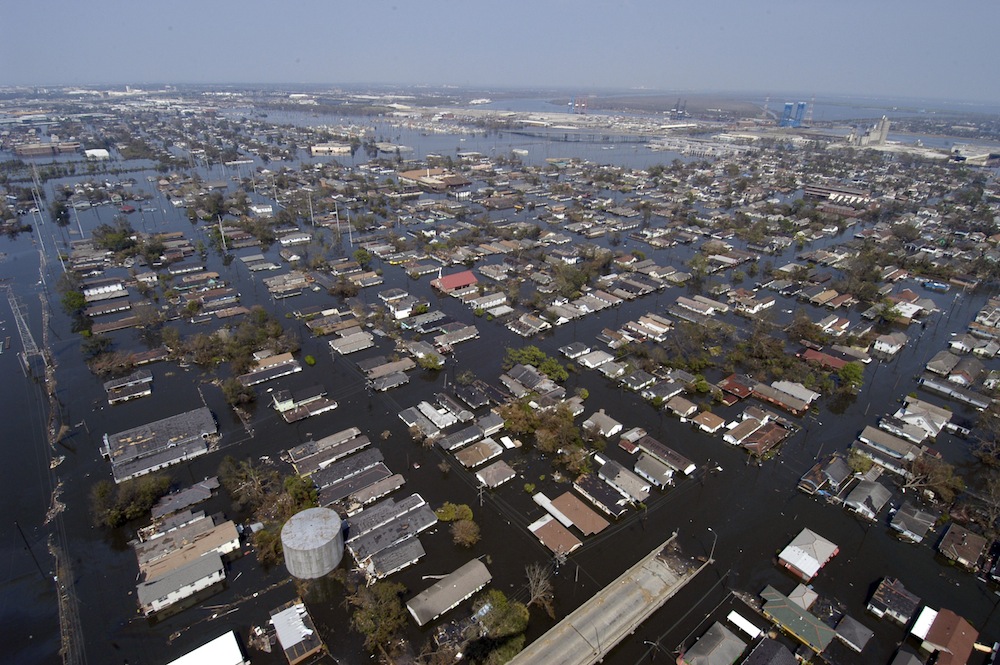New research by the Insurance Institute for Business & Home Safety (IBHS) indicates that stronger building standards and codes have contributed to stronger roofs in the Gulf Coast region.
In the 10 years after Katrina, Alabama, Louisiana and Mississippi, have also added tougher requirements for inspections, building permits, and contractor licensing. Combined with beefed up codes, this is good news for the resiliency of buildings in the region, IBHS says.
IBHS researchers examined changes specific to roofing requirements by evaluating and analyzing key aspects of roofing regulations, including codes, contractor licensing, permits, and inspections. Building codes have substantially improved, with 100% of surveyed jurisdictions currently enforcing either the 2012 or 2009 edition of the International Residential Code (IRC). Prior to Katrina, only about one-third (36%) of coastal communities surveyed were known to enforce the IRC.
In addition to enactment and enforcement of the latest building codes, IBHS recommendations for hurricane-exposed communities include adoption of IBHS FORTIFIED HomeTM–Hurricane superior roofing construction standards. These standards provide increased resilience through stronger construction techniques, and were specifically developed for these locations.
Related Stories
| Dec 29, 2011
Decision not to fireproof the new World Trade Center Transportation Hub criticized
Some criticized the decision, reasoning that the structure could be a terrorist target.
| Dec 29, 2011
Seismic safety in question at thousands of California public schools
California regulators responsible for enforcing earthquake safety laws have failed to certify more than 16,000 construction projects in California public schools, increasing the risk that some projects may be unsafe, according to a state audit report.
| Dec 29, 2011
GreenWizard offers cloud-based LEED credit management, assessment
The company recently began offering companies the ability to run assessments for design credits, in addition to traditional product-specific LEED credits.
| Dec 22, 2011
Federal home weatherization program has impacted 6.8 million homes
More than 6.8 million homes have been weatherized using federal, state, utility, and other funds under the American Recovery and Reinvestment Act.
| Dec 22, 2011
Group developing BIM data standards
A collaboration among Georgia Tech’s Digital Building Lab, the Precast Concrete Institute, the American Concrete Institute, and the American Institute of Steel Construction aims to develop global standards for transportation of three-dimensional digital models among fabricator, architecture, engineering, and construction groups.
| Dec 22, 2011
New green code spells out thermal requirement for roof retrofits
The 2012 International Green Construction Code (IgCC) includes a straightforward approach to minimum thermal requirements for roof and wall systems.
| Dec 22, 2011
AGC’s safety conference Jan. 11-13 in San Antonio
The Associated General Contractors of America’s national meeting for safety and health professionals will take place Jan. 11-13, 2012 in San Antonio, TX.
| Dec 22, 2011
Proposed New York City zoning revamp encourages rooftop solar and wind energy
New zoning regulation proposals to make it easier for building owners in New York City to make their structures more sustainable have entered the public approval process.
| Dec 15, 2011
Dayton, Ohio schools saving $2.6 million annually by building to LEED
On average, green schools save about $100,000 a year on operating costs, including energy and water savings.
| Dec 15, 2011
Building to LEED standards can pose new risks for construction workers
Workers on these projects suffer a 24% increase in falls to lower levels during roof work, which researchers attributed to the installation of solar panels, and a few other risks.
















